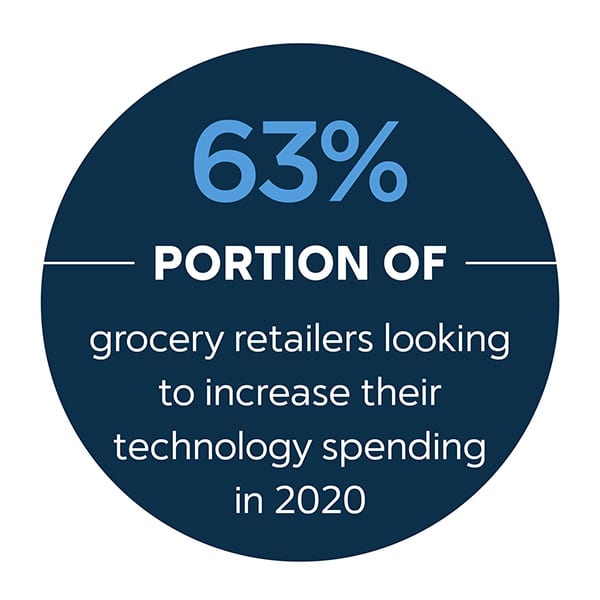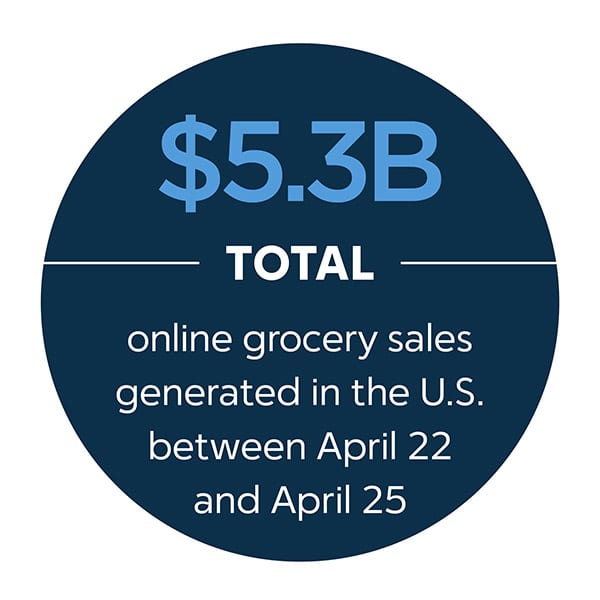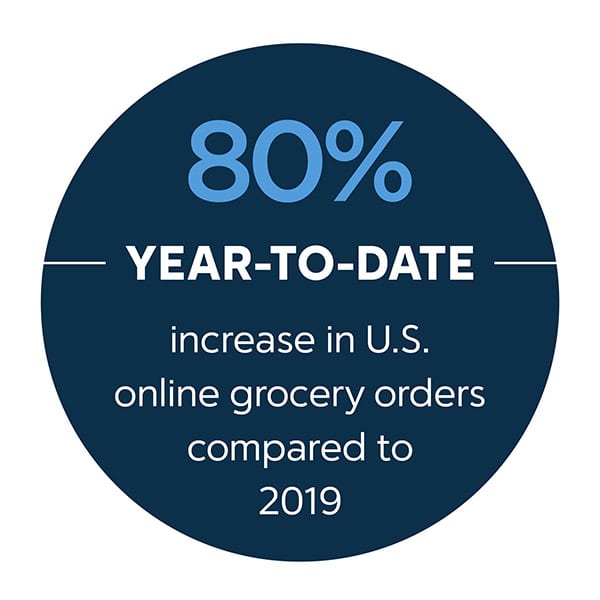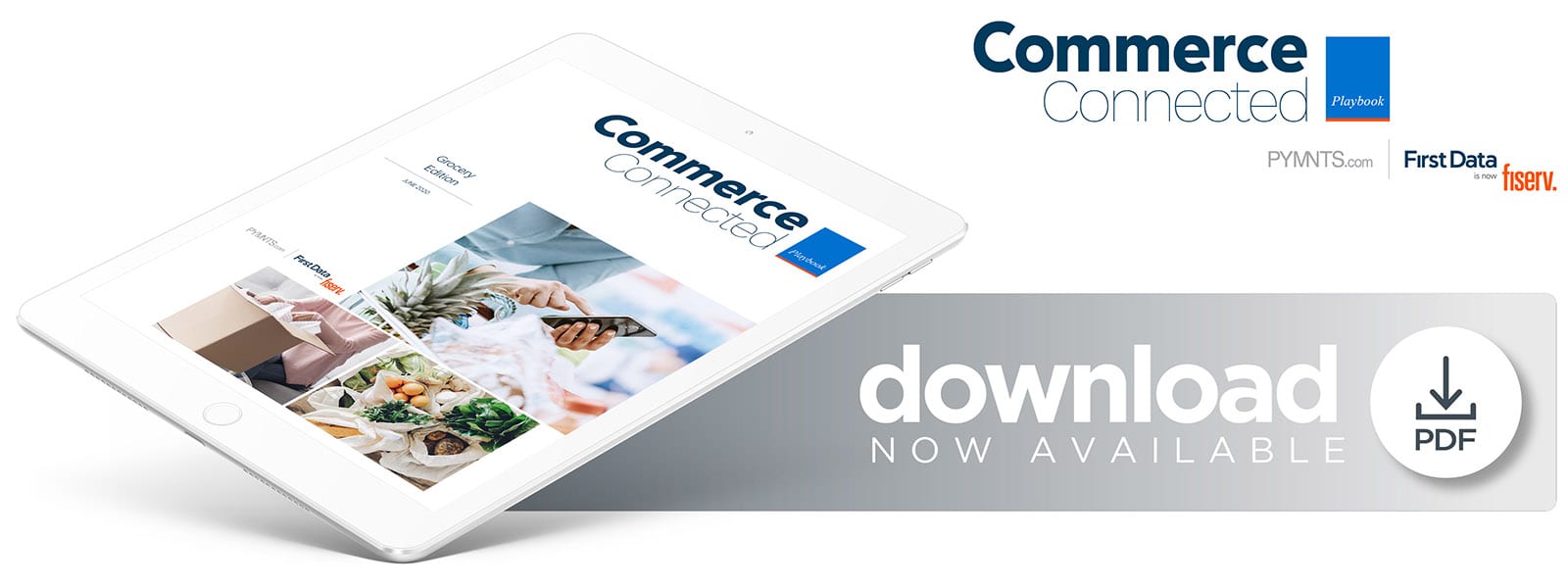Keeping Grocery’s ‘Digital Shifters’ Loyal Post Pandemic

The new coronavirus had an immediate effect on the grocery industry, with many grocers putting safety measures in place to ensure both their employees and customers could interact safely in stores.
A growing number of consumers in the United States simply did not take the risk and grocery orders through online or mobile platforms quickly increased, including those made through third-party applications such as Instacart and meal-kit subscription services.
This follows on a rise in online grocery ordering that has been ongoing for several years, with the pandemic rapidly accelerating their popularity. Grocers have thus needed to adapt to this trend and make adjustments to the way they interact and serve customers both online and i n store. This includes changes to how customers find items, how they fill their orders and how they pay.
n store. This includes changes to how customers find items, how they fill their orders and how they pay.
In the Commerce Connected Playbook: Grocery Edition, a collaboration with Fiserv, PYMNTS analyzes how the COVID-19 pandemic has affected the grocery sector, how online and mobile delivery is progressing and what emerging trends grocers must examine to provide seamless omnichannel experiences to expectant consumers.
What The COVID-19 Pandemic Is Revealing About Grocery’s Online, Mobile Future
 There were 62.5 million online grocery orders placed in the U.S. by the end of April, a record figure that overshot the previous record set in March. This upward trend in digital grocery shopping occurred in part due to the stay-at-home orders put in place for public safety, but also due to steady, increased adoption by customers looking for convenience.
There were 62.5 million online grocery orders placed in the U.S. by the end of April, a record figure that overshot the previous record set in March. This upward trend in digital grocery shopping occurred in part due to the stay-at-home orders put in place for public safety, but also due to steady, increased adoption by customers looking for convenience.
What is more critical for the industry to consider now is how consumers will continue to shop in the aftermath of the pandemic, and what digital tools and technologies are most important for grocers to adapt to new realities. To learn more about how grocers are prepping to support consumer needs in the near future, PYMNTS spoke with both John Ross, president and CEO of the Independent Grocers Alliance, and Jacki Snyder, senior director for payment services at grocery wholesaler and services provider UNFI, in the Playbook’s Feature Story.
How Grocers Can Innovate Delivery For Tomorrow’s Omnichannel Shoppers
 Public health concerns and the expanding availability of a range of delivery apps have led to a recent rush in consumers buying their groceries digitally. Thirty percent of American grocery shoppers were using delivery options by late March, a percentage that is expected to continue to rise over the next few months. Yet consumers have not wholly abandoned in-store shopping or the use of brick-and-mortar services like curbside pickup. Many consumers are in fact using a mix of methods to complete their grocery experiences, including mobile apps and meal-kit subscription services. Grocers must therefore be ready to adapt innovative tools both online and in store that can help to keep that experience seamless for consumers.
Public health concerns and the expanding availability of a range of delivery apps have led to a recent rush in consumers buying their groceries digitally. Thirty percent of American grocery shoppers were using delivery options by late March, a percentage that is expected to continue to rise over the next few months. Yet consumers have not wholly abandoned in-store shopping or the use of brick-and-mortar services like curbside pickup. Many consumers are in fact using a mix of methods to complete their grocery experiences, including mobile apps and meal-kit subscription services. Grocers must therefore be ready to adapt innovative tools both online and in store that can help to keep that experience seamless for consumers.
To learn more about how grocers are innovating for the future of multi-channel shopping and delivery, visit the Playbook’s Deep Dive.
About The Playbook
The PYMNTS Commerce Connected series — a collaboration with First Data, now Fiserv — gives readers an overview of the latest developments, data and trends from the connected commerce space. Each Playbook covers major news involving connected commerce players and includes a data-driven deep dive into various retail segments and industries.




